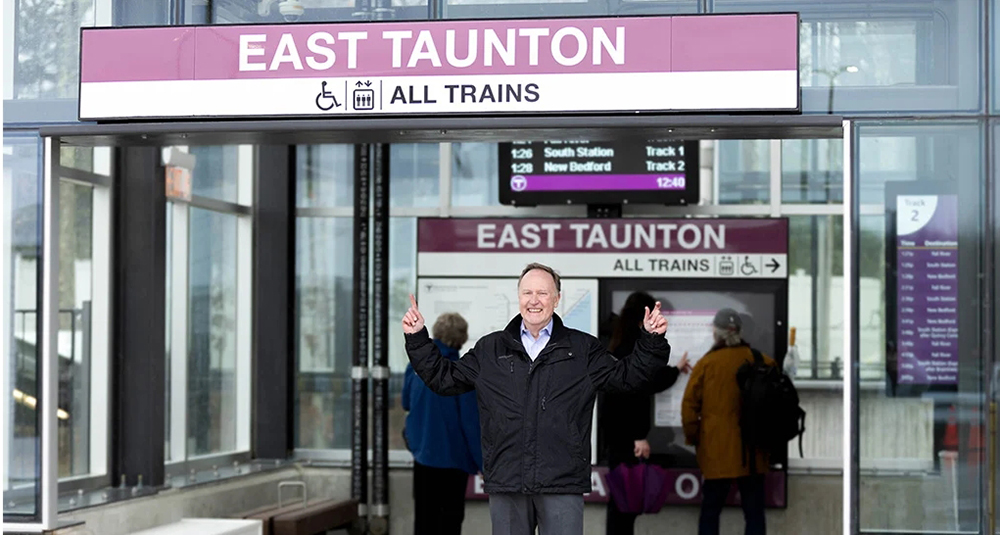News:
Spotlight Content
Posted: June 27, 2013
Representing a condominium developer or converter in the sale of individual condo units
I have previously written about how to represent an individual seller of a condominium unit. In this article, I am going to discuss how to represent a condominium converter or a developer in a unit sale.
My experience in representing a condominium converter or developer in unit sales began in the earlier seventies with 330 Beacon St. in Boston and Weymouthport in Weymouth. My experience has continued over the decades to include the Farm at Chestnut Hill in Newton, Folio at 80 Broad St. in Boston, and Parkview in Westborough. The object in handling multiple unit sales in a large building or buildings in a short period of time is to be well organized and efficient.
Because the Mass. Supreme Judicial Court has recently adopted a rule that requires attorneys in Mass. to provide clients with an engagement letter concerning the scope of the work they have been engaged to do for the client and their fees, the attorneys must provide such a letter to their developer and converter clients. In reality, this invariably has always been done, but now it is required by law.
Given the cyclical nature of real estate, the days of many unit closings in a short period of time are back. It is important to developer and converter clients that their closing attorneys be organized and efficient in order to close large numbers of unit closings within short periods of time.
Seller's attorney must prepare the condominium documents, namely:
* The Master Deed;
* The document that creates the organization of unit owners (usually a Declaration of Trust and By-Laws in Mass., but it could be Articles of Organization and By-Laws if a corporation is used, and just By-Laws if an unincorporated association is used);
* A form of unit reservation agreement (customarily used in lieu of an offer to purchase);
* A form of unit purchase and sale agreement;
* A sample 6(d) certificate;
* A sample unit deed (whereby buyer's consent to any future phases/development is included);
* A sample tax letter agreement;
* Limited warranty;
* Preliminary budget; and
* A specimen title insurance policy
The foregoing together with a copy of the site and floor plans should be in a bound presentation given to purchasers by the sales staff. The presentation should contain an overview, whereby the developer retains the right to amend the condominium documents as long as the basic rights of the prospective unit owner are not materially affected. This shall apply to the number and configuration of units, the addition of phases to a condominium if applicable, the ratio between residential units and commercial units in the case of a mixed-use condominium (so long as Fannie Mae provisions are not violated).
The purchase and sale agreement should be tailored to the particular project. I believe that a shorter purchase and sale agreement is better than a longer purchase and sale agreement. However, essential components need to be included. For instance, if the developer intends to develop additional phases, this needs to be explained in a purchase and sale agreement so that buyer's consent to future development is obtained. Also, if a new project is to contain 25 or more units, issues relative to the Interstate Land Sales Full Disclosure Act of 1968 (15 USC Chapter 42) need to be identified.
In addition to the presentation, the developer's or converter's attorney should prepare a closing package for the closing attorney (the attorney for the buyer and/or the buyer's lender):
* A completed unit deed;
* A completed tax letter agreement;
* An insurance certificate;
* Recording information of the condominium documents;
* A current municipal lien certificate;
* In Boston, a current Water and Sewer Commission certificate;
* Closing adjustments (condominium reserves, condominium fees and real estate taxes);
* A copy of the specimen title insurance policy;
* A certificate of occupancy (temporary) in the event of a substantial rehabilitation or new construction; and
* A list of recording charges.
Careful track needs to be kept relative to conveyance of parking spaces, storage spaces or other appurtenant rights. In a project with 100 or so parking spaces, care needs to be taken so a single space is not sold more than once by accident. One might be surprised to know this does in fact happen.
A subordination agreement or consent to the condominium master deed by the lender(s) on a condominium development needs to be recorded with the Registry of Deeds. Lender(s) will have to provide a payoff statement relative to a partial release for each unit closing. The terms of obtaining partial releases for each unit closing should be established prior to the beginning of the sale of units. The more simple the formula (for instance, 80% of the purchase price) the better. If a lender is a private lender, original partial releases in recordable form will have to be delivered to the closing.
There is obviously much to be done in representing a developer or converter of a condominium. In a strong market for condominium units, good organization is essential to a smooth and efficient process. In cases where my firm has represented developers of mid-sized and larger condominium projects, we have typically conducted from three to six closings per day, upon completion of construction. When a firm knows how to stream line this process, this is a realistic expectation.
Saul Feldman is a real estate attorney with Feldman & Feldman, P.C., Boston.
Tags:
Spotlight Content
MORE FROM Spotlight Content
Check out the New England Real Estate Journal's 2025 Fall Preview Spotlight
NEREJ’s Fall Preview is Out Now!
Explore our Fall Preview Spotlight, featuring exclusive Q&As with leading commercial real estate professionals and in-depth byline articles on today’s most relevant market topics. Gain insight into the trends, challenges, and opportunities shaping New England’s commercial real estate landscape this fall.
Explore our Fall Preview Spotlight, featuring exclusive Q&As with leading commercial real estate professionals and in-depth byline articles on today’s most relevant market topics. Gain insight into the trends, challenges, and opportunities shaping New England’s commercial real estate landscape this fall.

Quick Hits
Columns and Thought Leadership

Shallow-bay wins on 495/128: A renewal-driven market with a thin pipeline - by Nate Nickerson
The Boston industrial market entered mid-2025 in a bifurcated state. Large-block vacancy remains elevated, while shallow-bay along the 495/128 corridor continues to prove resilient. Fieldstone’s focus on this geography positions us squarely in the middle of a renewal-driven, supply-constrained

How long should I hold a property for it to qualify as an investment property in connection with a 1031 tax-deferred exchange? - by Brendan Greene and Mark McCue
Internal Revenue Code (IRC) Section 1031 provides “No gain or loss shall be recognized on the exchange of property held for productive use in a trade or business or for investment if such property is exchanged solely for property of like kind which is to be held

30 years on South Coast Rail: A journey to connect Southeastern Mass. with commuter rail - by Rick Carey
On March 24, 2025, a dream more than three decades in the making became a reality with the launch of the Massachusetts Bay Transportation Authority’s (MBTA) South Coast Rail commuter service. This milestone marks the completion of a project that overcame numerous starts and stops, including changes in leadership

How do we manage our businesses in a climate of uncertainty? - by David O'Sullivan
These are uncertain times for the home building industry. We have the threat of tariffs mixed with high interest rates and lenders nervous about the market. Every professional, whether builder, broker, or architect, asks themselves, how do we manage our business in today’s climate? We all strive not just to succeed, but










.png)
